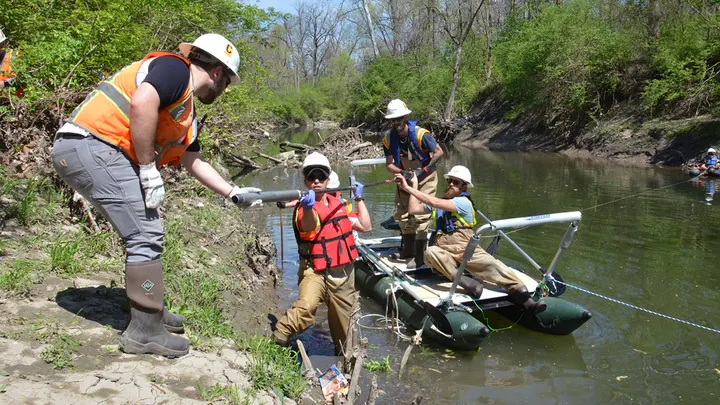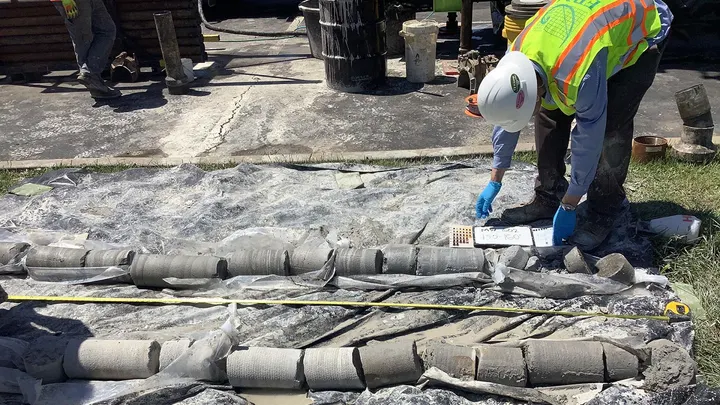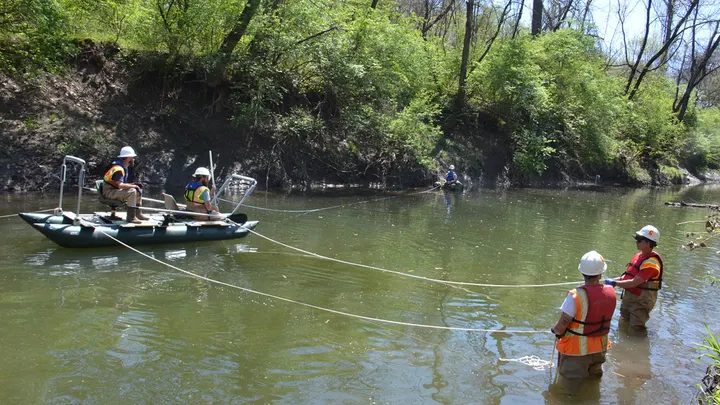Environmental Protection Agency and Army Corps of Engineers work to ensure West Lake Landfill and Coldwater Creek are safe

Some Missouri residents and lawmakers are calling for a swift cleanup of several toxic sites in the St. Louis area.
“We’ve always felt like we’re being gaslit by these federal agencies, the way they answer questions, they’re so irrelevant,” Dan Chapman, co-founder of Just Moms STL, told Fox News. “They really should have gone in there and cleaned up the creek before any of this was built. They had an opportunity to really prevent all the damage that we’re seeing now. And for whatever reason, they chose not to.”
Read Also: King Charles gives Kate Middleton historic royal title amid cancer battles
Chapman’s group, which she founded with neighbor Karen Nickell, advocated for the cleanup of polluted sites in St. Louis.
“We’ve talked to a lot of people who live less than half a mile from the West Lake Landfill,” Nickell said. “Because those houses were built there in the late ’50s, they didn’t know there was even a landfill there.”
Nickel and Chapman said when they bought their homes, they didn’t know the landfill was nearby and that it had been designated a Superfund site.
“It’s like, what’s that? I didn’t even know to look for it when I bought my house,” Chapman said.
The Environmental Protection Agency (EPA) is using social media to provide updates on cleanups, making information accessible online.
“Some of the activists and community members in the area are very strong, they’re always willing to provide information. We’ve tried to build our relationship with key community members and I think it’s paid off,” said Bob Juergens, director of the EPA Region 7 Superfund and Emergency Management Division.
EPA added the West Lake Landfill to its National Priorities List in 1990. This list is part of the Superfund Sites Program, which documents the nation’s hazardous waste sites. Those locations are eligible for federal funding to pay for extensive, long-term cleanup actions.
“The Superfund process is long. We understand their concerns with that,” Jurgens said.
EPA proposed a plan for remediation in 2006. After a public comment period, the agency adjusted its plan and issued a new Record of Decision in 2008.

“Based on feedback from the community, a revision was made to what was completed in 2018,” Jurgens said. “It’s a lot of nonstop work with parties responsible for assessment, remediation design, and ultimately implementation.”
Nearly 35 years after it was identified as a Superfund site, residents argue that the process should continue.
“We’ve been told we’re close to getting there. But, you know, we’re running against the clock,” Chapman said.
The EPA acknowledges that there is no definitive timetable for when the West Lake Landfill will be completely cleaned up.
“We don’t have a timeline. It’s hard to predict how long it will take. We’ve made really good progress with the responsible parties in doing a full assessment,” Juergens said.
Adding to the complexity of the task, fires have been burning at the site for nearly a decade. The EPA reports that it is not known how the fire started.
“It’s not uncommon to have landfill fires,” Jurgens said. “Once that fire is underground, it’s very difficult to put it out. But they did some good things at that site to address it.”
Juergens said there is a significant gap between the fires and the radioactive waste. Crews have put up a barrier to contain the fire and there is currently no danger to residents in the area, officials said.
“That subsurface smoldering event is definitely in better shape than it was several years ago,” Jurgens said.

Chapman and others who live in the area say problems in the past contributed to the lengthy cleanup underway today.
“The truth is that the two federal agencies responsible for this radioactivity throughout the region have made massive errors and mistakes in classifying it,” Chapman said.
Two sites where toxic waste was stored were added to the National Priorities List in 1989 after the Manhattan Project. The list does not include Coldwater Creek, which extends from those sites, but sites along the creek where radioactivity has been detected fall under. List of storage sites.
“This creek runs 14 miles across the county I serve. So I believe the entire creek should be tested,” said Missouri State Representative Chantelle Nixon-Clark.
Nixon-Clark, a Democrat, is a two-time cancer survivor who grew up near Coldwater Creek. She represents the area and recently held a town hall to hear the stories of others who live there.
“Many constituents shared how they too had lost a loved one and were dealing with the aftermath,” Nixon-Clark said. “It’s heartbreaking to see my community suffer and deal with such impacts of Coldwater Creek. We know there are many more stories out there.”
The Army Corps of Engineers, the lead federal agency working to clean up the waterway, estimates the effort could take until 2038.
“If you do the math, we’re already 80 years old,” Nixon-Clark said. “Some of us may not even experience a cleanse in our lifetime.”
Like the EPA, the Army Corps of Engineers admits the process is lengthy.
“There’s an extensive amount of coordination, research, documentation, remediation that we have to do to get an area. So the whole process takes some time,” said U.S. Phil Moser, program manager for the Army Corps of Engineers St. Louis District.
Sen. Rep. Josh Hawley, R-Mo., said the cleanup timeline at both sites was unacceptable.
“It’s outrageous. Remember, there’s been pollution in this creek since the ’50s, since the ’60s, and now in 2038? I mean, we’ll hit the century mark,” Hawley said. “They need to stop kicking the can down the road. It needs to be a collaborative effort.”
The Army Corps of Engineers is taking samples along a 14-mile stretch of Coldwater Creek. The area has 756 properties like homes, commercial spaces, and recreational spaces. They test for uranium, radium, and thorium, among other contaminants.
“When the Army Corps took over in 1998, the range was 100% unknown,” Moser said. “We got to 2012 and realized that more extensive sampling was needed in Coldwater Creek.”
New maps from the agency show locations with contaminated soil. They also showed the parts where crews were taking samples and the areas they tested and confirmed safe.
“There’s more waste than they’re saying,” Nickell said. “The Army Corps, I don’t know if they haven’t been forthcoming, honest, transparent. It’s hard to say because I haven’t had a very trusting relationship with that agency over the years.”
Coldwater Creek flows behind Jana Elementary School. It closed in 2022 after thorium was found on the property linked to cancer.
“Jana Elementary School became a nightmare for us because we knew where it was along the creek,” Chapman said.
Ashley Bernagh is also a member of the Just Moms STL group. She was the PTA president at Jana Elementary, which her son attended. She said she has been requesting testing and documents from the Army Corps of Engineers for years.
“Since 2018, the Army Corps of Engineers and the Department of Energy have done their part by not answering my questions,” Bernag said.
Moser said the agency tested inside and outside the school and determined the contamination was background radiation.
“We have verified and determined that the school is safe from a radiological standpoint, and we are committed to that, as are the federal agencies that have reviewed our documentation,” Moser said.
Bernag and other advocates say that’s not enough. They eventually took samples from an outside company’s school grounds.
“The Boston Chemical Company was able to take dust samples and analyze them and found thorium 230, a type of metal thorium used in radioactive bomb waste from early weapons development in St. Louis,” Bernag said.
The Army Corps of Engineers reported finding hazardous levels of thorium, but only in areas close to the creek.
“The Army Corps of Engineers on the creek banks are correcting them as they meet their magic threshold. In what? What do they like to clean up the radioactive waste?” Bernag said.
The Army Corps also takes soil samples after detecting contamination at homes near Coldwater Creek.
“They were finding radioactive contamination in people’s basements next to the creek,” Hawley said. “They never fixed it. They never compensated the Missourians for what they did and didn’t clean it up. They should clean up the creek. They should clean up the landfills and they should compensate the people who got sick.”
